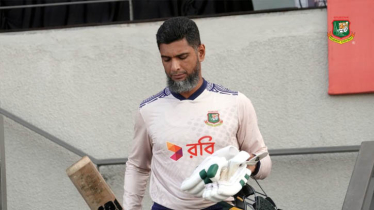
Photo : Collected
James Anderson, English bowler debuted as a test cricketer in 2003. England's most capped played 187 test matches ended in July 2024 and he played his last match. He bows out in Lord his last play for better age display.
Among fast bowlers Stuart Broad with 167 matches shades record Cortney Walsh's 132-match playing record. Only Sachin Tendulkar left behind him along with 200 test matches.
Anderson was rewarded with a Test cap against the touring Zimbabwe side in the summer of 2003 following a brilliant start to his ODI career in the winter of 2002/03 in Australia and the subsequent World Cup in South Africa.
Anderson will spend half of lives playing test cricket for his country, soon turning 42 years old. He retires one of the bowlers who held 700 wickets club in tests surprising Shayne Warnes's 708s in his final test.
However, Anderson broke Ian Botham's long-standing record of most wickets for England in 2015 and became the first English bowler to get to the 400 and 500 wicket milestone and later became the first seamer to reach the 600 and 700-wicket mark.
Though, he has taken 329 wickets in 90 Tests since turning 32 during the 2014 home season, a tally bettered only by Rangana Herath (363). Among fast bowlers, only Courtney Walsh (297) and Sir Richard Hadlee (252) have 200 or more wickets after turning 32.
A further testament to Anderson ageing like fine wine is the fact he played 62 Tests after turning 35 no other specialist bowler has even played 50 Tests from a similar stage. And he was good as ever in those 62 games bagging 220 wickets at 22.86 while sending down 12000+ deliveries.
Up 13/14 ashes Anderson career entered into the of his career, average 28.46 with new ball and 32.73 with old ball combined 92 games of his career.
In 95 matches since the 2014 home summer, those averages significantly improved to 21.73 and 23.49 respectively 11 runs fewer per wicket with the new ball while the breakthroughs with the old ball came about nine runs cheaper.
Another important aspect of his prowess with the old ball is the vastly improved control he brought to the table. He had an economy rate of 3.08 in the first phase of his career with the older ball which came down to 2.50 per over in the latter half.
Messenger/Sourov








